
Partners Developing Underwater Single Photon Imaging System
a groundbreaking underwater single photon mapping and imaging system. The partners have been awarded £2.7 million in funding from the Innovate UK Commercializing Quantum Technologies Challenge.The revolutionary underwater single photon imaging system (USPIS) project will develop next generation technology and equipment capable of delivering wide area coverage and high-resolution 3D images in all underwater environments.The consortium brings together decades of expertise and experience from six key industrial, research and academic institutions with world-class backgrounds to collaboratively
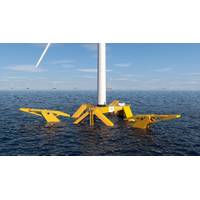
Gazelle Says Its New Floating Wind Platform Reduces Costs and Environmental Impact
Gazelle Wind Power, a Dublin-based developer of foundations for floating offshore wind farms, is unveiling third-generation technology this week at a wind industry event in Denmark.The company said its enhanced design "further refines Gazelle’s solution to address the primary challenges facing the offshore wind industry—such as cost, supply chain bottlenecks, and sustainability—by providing a lightweight, cheaper design that minimizes the impact on fragile marine environments while using existing port infrastructure."Gazelle said that the new platform delivers enhanced
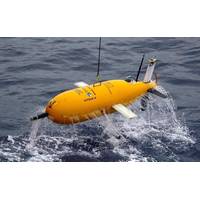
MTR100: National Oceanography Centre (UK)
, large scale, long-term marine science problems to underpin international and UK public policy, business and wider societal outcomes. At the Marine Robotics Innovation Center in Southampton, the NOC hosts a community of 28 innovative partner companies, working in collaboration to develop next generation technology for platforms, components and sub-systems in order to advance oceanographic research for the benefit of both science and industry.The last 12 months has seen the NOC expand its reach and influence around the globe, with a number of overseas projects aimed at advancing marine science, capacity
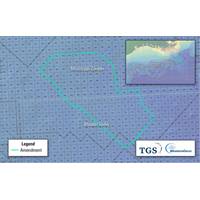
TGS, Schlumberger Partner for Ocean-bottom Node Project
underlying data, WesternGeco and TGS will be able to produce a higher-quality product for clients than would otherwise be available over the areas of interest.Exploration and production companies are increasingly looking to ocean-bottom nodes, combined with advanced processing, as the next-generation technology to support both exploration and development activities in the Gulf of Mexico. Ocean-bottom node technology has traditionally been focused on development and time-lapse 4D seismic applications, but multiclient node projects will also have significant impact on near-field and greenfield activities

Voices: Sean Halpin
and optimize sensor payloads. It’s important to consider not only how long a platform can stay at sea, but also how much power it can provide at the same time. Power Index: To achieve long duration operations we must utilize a low power budget (with today’s solar generation technology, microchip technology and energy density paradigms) for onboard sensor payloads, computing and communications. •Interoperability/Connectivity: This is critical to a forward-looking marine robotics vision. In order to advance offshore operations and ocean exploration in general
Brexit: What’s in Store for the Subsea Sector?
; On the marine energy side, the loss of EU funding is a particular concern. The EU provides valuable European Regional Development Fund monies for low carbon and renewable energy development, which parts of the UK have used to support the development of early stage wave and tidal energy generation technology, including substantial investment in Wales. This money is seeking to help these technologies reach a stage at which they can compete commercially with other energy technologies as well as embed their supply chains in the UK. By leaving the EU, this funding will be lost, and it is currently
Foster Wheeler Wins Contract For Retrofit-SCR System
processing facilities for the upstream oil and gas, LNG and gas-to-liquids, refining, chemicals and petrochemicals, power, minerals and metals, environmental, pharmaceuticals, biotechnology and healthcare industries. The company’s Global Power Group is a world leader in combustion and steam generation technology that designs, manufactures and erects steam generating and auxiliary equipment for power stations and industrial facilities and also provides a wide range of aftermarket services. The company is based in Zug, Switzerland, and its operational headquarters office is in Reading, United Kingdom
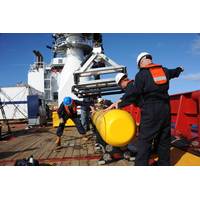
Bluefin Robotics on the Hunt for MH370
. This was an internal development for commercial needs, and the depth rating, if you think about it, was for the Pre Salt fields off of Brazil. Lets discuss the proliferation of AUVs in the offshore market. Specifically, where to you see the market today? The first generation technology autonomous vehicles are built on is proven and trusted. The vehicles go out, collect data and come back. Overall the use of AUVs in the offshore oil and gas industry is still in its infancy. There is still some work to be done to integrate them as safe and accepted assets in active offshore
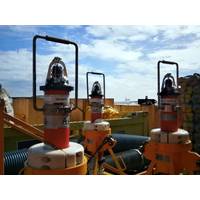
Sonardyne Wins in Innovation for 6G
award a UK business can receive. Launched in 2010, Sonardyne’s award winning 6G (Sixth Generation) technology platform was judged to have addressed users’ needs for underwater technology that is low risk, versatile and easy to use. Its performance over the previous generation technology can be likened to the difference between analogue and digital mobile telecommunications. 6G products have made an impact on diverse subsea operations around the world and, in 2013/14, were exported to 55 different countries. “We are immensely proud and honored to have won


 February 2024
February 2024





